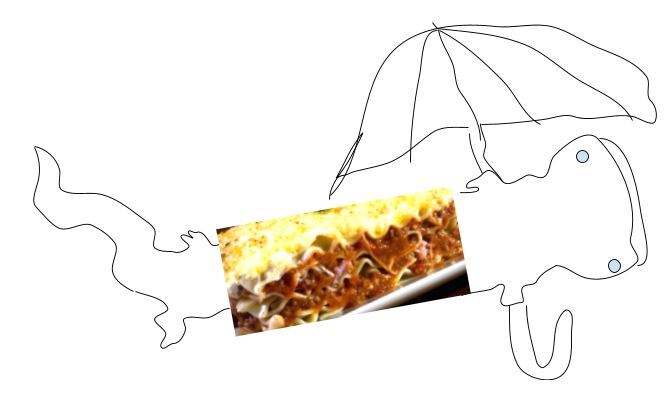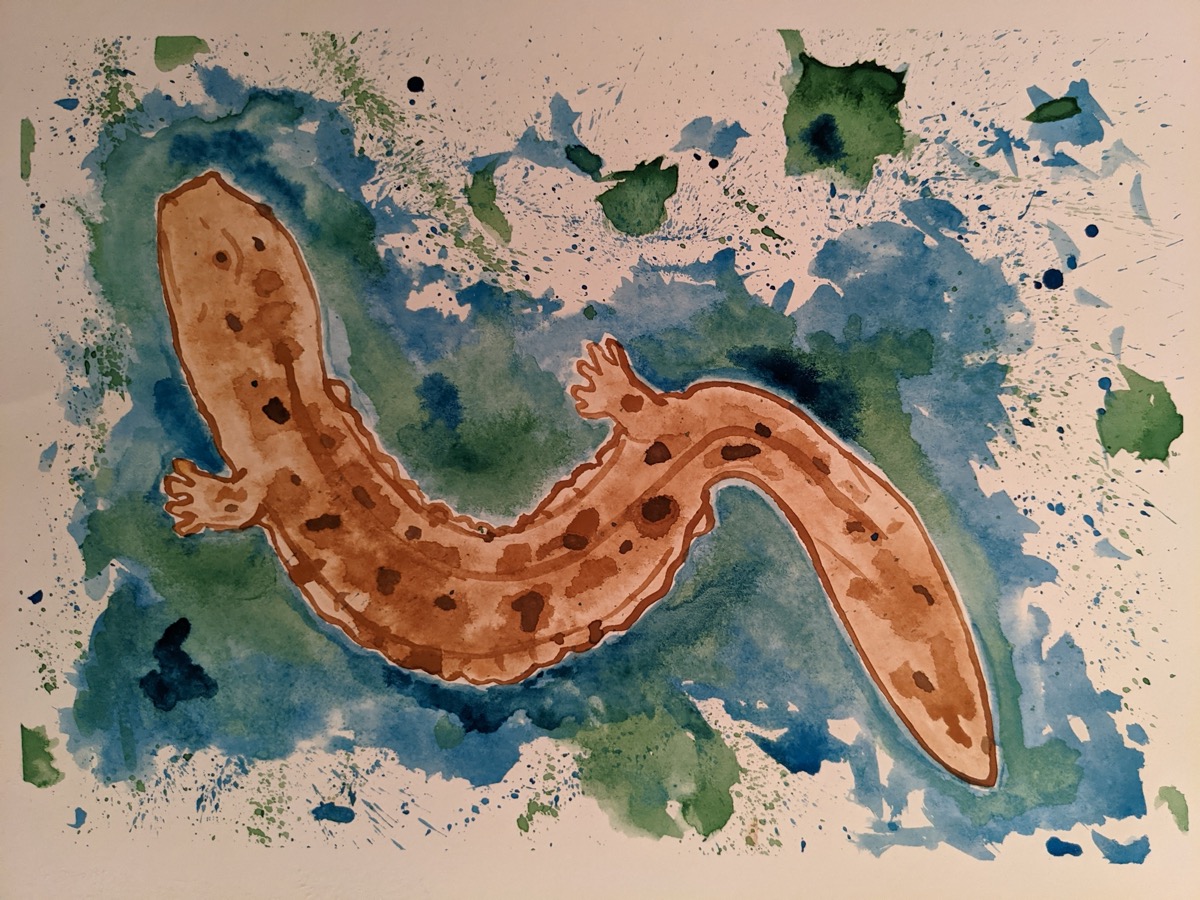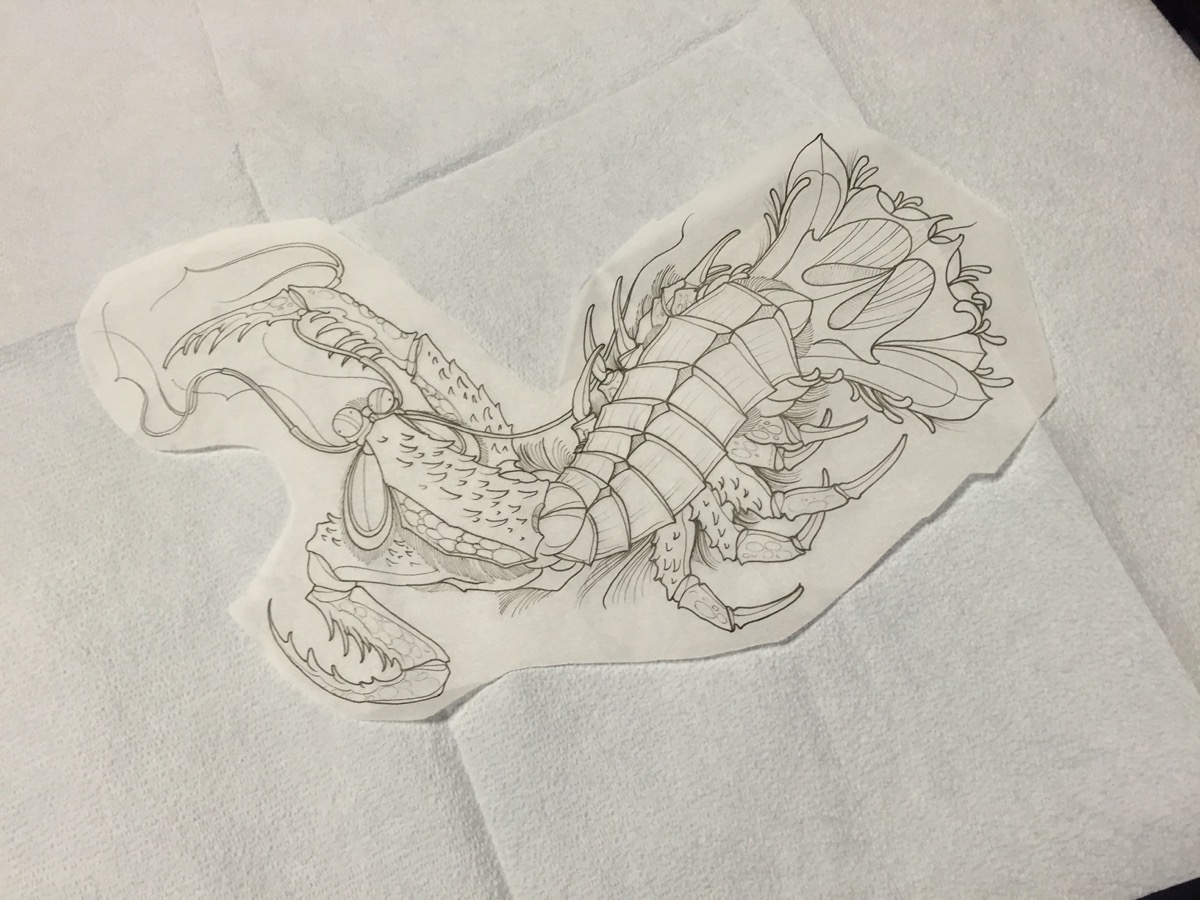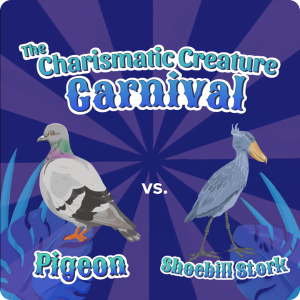Charismatic Creature Carnival: Who Rules The Night?
17:24 minutes
We’re in week two of our Charismatic Creature Carnival, our celebration of six overlooked or unfairly maligned species that deserve a closer look. Our audience submitted our candidates, but only one will be crowned the very first carnival inductee into the Charismatic Creature Corner Hall of Fame.
This week’s friendly head-to-head battle is between the opossum and the aye-aye, submitted by listeners who remarked these creatures are cute, though unconventionally so. Defending the opossum is Lisa Walsh, postdoctoral researcher at the Donald Danforth Plant Science Center, based in Washington, D.C. Squaring up against them to support the aye-aye is Megan McGrath, education programs manager at the Duke Lemur Center in Durham, North Carolina. Find out how to participate in the final creature face-off and check out what you said about the last round between the mantis shrimp and the hellbender salamander!
Listeners of last week’s matchup-up between the mantis shrimp and hellbender salamander had a lot to say. Here’s some of our favorite extra credit submissions that came with votes.
Please refresh your browser if you do not see the audio listen buttons below.
The hellbender salamander had some long-standing fans, but picked up some new ones during the Carnival.


Shalimar from Sebastopol was won over by a fun fact about hellbender hands:
I just love that the hellbender has fingernails. Fabulous.
Ultimately, the mantis shrimp was victorious as our first semi finalist for the Carnival. Congrats to expert defender Jason Dinh, and all the mantis shrimp fans out there.
Mimi from California shared what she loved the most about the mantis shrimp:
The eyes! The mantis shrimp eyes! It’s gotta be those eyes! They’re just crazy.

Meagan from Waco was delighted to learn about a creature she hadn’t heard of before:
As I was listening about the mantis shrimp, I was waiting for my daughter’s school to get out so I was stopped in the pickup line, and HOLY COW, that thing is so cool. I wanted to see what it looked like for myself, and not only is it beautiful—I watched a little video about the rainbow one—but those guys are dangerous. So thank you for letting me learn about something new.
 Charismatic Creature Carnival: Pigeon vs. Shoebill Stork
Charismatic Creature Carnival: Pigeon vs. Shoebill Stork
Last up, two feathery and flighty creatures: Pigeon and Shoebill Stork—which bird is best?!
Invest in quality science journalism by making a donation to Science Friday.
Megan McGrath is Education Programs Manager at the Duke Lemur Center in Durham, North Carolina.
Lisa Walsh is a postdoctoral researcher in the Donald Danforth Plant Science Center in Washington, DC.
UMAIR IRFAN: This is Science Friday and I’m Umair Irfan. And it’s time for our Charismatic Creature Carnival.
[ANIMAL NOISES]
Joining me today is SciFri’s Charismatic Creature Correspondent, Kathleen Davis. Hi Kathleen.
KATHLEEN DAVIS: Hey, Umair. I’m glad to have you along for the carnival.
UMAIR IRFAN: Well, I’m really excited to be here. So before we jump into this week’s Charismatic Creatures, remind us what this carnival is all about.
KATHLEEN DAVIS: So our Charismatic Creature Carnival is a celebration of six creatures suggested by our listeners. By charismatic, we mean a creature that’s overlooked or unfairly maligned by the general public that once you look a little bit closer, you can tell it has an undeniable charm. We’ve got three weeks of match-ups And then we’re going to crown a winner.
UMAIR IRFAN: And I hear we have an update about last week’s match-up.
KATHLEEN DAVIS: Yes. So if you remember last week we kicked off the carnival with a showdown between the mantis shrimp and the hellbender salamander. Our listeners went to sciencefriday.com/carnival to choose their favorite creature out of the two. And the votes are in. So Umair, I would like a drum roll please.
[DRUMMING]
Slithering into the first semi-final spot of this Charismatic Creature Carnival, the People’s Choice is the mantis shrimp.
UMAIR IRFAN: Congratulations to all the mantis shrimp enthusiasts out there.
KATHLEEN DAVIS: So we still have two more semifinalists to discover, one of which is going to come from today’s match-up.
UMAIR IRFAN: All right. I’m ready. So who are our charismatic creatures today?
KATHLEEN DAVIS: So our first creature, joining us exclusively from your local woods– or maybe even your backyard– is the opossum. This creature was nominated by a couple of people, including listener Anna from Boston, who wrote us on Twitter. She said, “I’d like to nominate the opossum for the carnival because it’s the only marsupial in the US. And it’s pretty cute, even though a lot of people don’t like them.”
And representing the opossum in our showdown this week is Dr. Lisa Walsh, postdoctoral researcher at the Donald Danforth Plant Science Center. She is based in Washington D.C. Welcome Lisa.
LISA WALSH: Thank you for having me.
KATHLEEN DAVIS: And facing off against the opossum in our showdown is the most suggested creature of our carnival. All the way from the forests of Madagascar is the aye-aye. We got quite a few nominations for the aye-aye, including this message on our SciFri VoxPop app, from Lon in Sioux Falls, South Dakota.
LON: I think that you should add the aye-aye as a charismatic creature. They are the largest nocturnal primate. They have some very specialized hands. Their teeth never stop growing, like a rodent. And just they’re cute and cuddly looks, all in the eyes of the beholder. Thanks.
KATHLEEN DAVIS: And representing the eye in our carnival is Megan McGrath, education programs manager at the Duke Lemur Center in Durham, North Carolina. Welcome and thanks for joining us.
MEGAN MCGRATH: Hi. I am excited to be here.
UMAIR IRFAN: We’re excited to have you both here. Just to note that this segment was recorded in front of a live Zoom audience. Learn how you can join a future radio recording at sciencefriday.com/livestream.
KATHLEEN DAVIS: So I have to say, I am completely charmed that both of our nominators use the word cute to describe each of these creatures. But I would love a basic description from each of you, just to paint a picture for our audience of what your creature looks like. What are they all about? Lisa, I think more people might be familiar with the opossum. So let’s start with you.
LISA WALSH: Sure. The Virginia opossum I’m guessing is what was nominated. So that’s the marsupial that is in the US. There are actually over 100 opossum species across the American continents. But just to be brief, I’m going to focus on the Virginia opossum.
It’s actually the largest of the American opossums, about the size of a cat, usually whitish-gray, pink nose, big bluish black ears, and a tail that– unless you’re really up close and personal– it looks hairless. There is actually hair there. But because they use it to grab onto branches and stuff they don’t want it to be long and lush, just like our hands which grab things. We don’t have a lot of hair on our hands.
So it sometimes gets compared to a rat. I don’t think that is fair to the possum, or a lot of rats out there actually. The opossum is found from Costa Rica all the way up into Ontario, North Dakota, Maine. They typically are found in deciduous forests. They really like marshland. But they are really resilient animals. They’ll be in disturbed environments, including your backyard. I’ve seen pictures of them on college campuses.
They’re also found across agricultural fields. They really just don’t want to be in desert areas or really high up mountains. But otherwise they’re going to be found all over.
UMAIR IRFAN: Lisa, I wanted to ask. I’ve heard the term opossum and possum. And they’re often used interchangeably. What’s the difference?
LISA WALSH: That’s a really good question. So historians tend to credit the name with John Smith actually, kind of anglicizing an American Indian Algonquin word opossum for the animal, which roughly translates to white animal. This was actually the first marsupial that European colonizers discovered. And so that was kind of what they based all other their marsupials off of. And so when James Cook arrived in Australia and they found similar looking marsupials that were also in trees, they decided oh we should name it opossum, like that original marsupial that we quote discovered.
And I guess somewhere along the line, they decided just for clarity we should call it possum. Although nowadays, even in America, we really– I don’t know if it’s lazy or we just don’t like the O. We also drop the O and sometimes refer to them as possum. But possums in Australasia, those are very distantly related to the opossums we find here. They come from numerous families, the brushtail possum, ringtail possum, honey possum. But, no. Those are distinct and their own really interesting charismatic animals.
KATHLEEN DAVIS: Now, let’s move on to the aye-aye. Megan, what does this creature look like?
MEGAN MCGRATH: They look like a mash of a bunch of different animals got jumbled together. So we’ve heard comparisons to possums or opossums before. They have big, bushy tails that almost look like a wolf or something. They have giant ears like a bat. But overall, they are about five pounds, lots of bushy black and silver wiry hair all over. And they have– in my opinion extremely charismatic faces, with very light silvery hair around their faces, giant eyes, giant ears, and little pink noses.
UMAIR IRFAN: Now Megan, I just looked up a picture of an aye-aye. And the thing that jumped out to me is that really long finger they have. What’s the point of that?
MEGAN MCGRATH: Great question. So aye-ayes are full of really unusual adaptations, and not just for being their own animal, but they don’t match a lot of primate rules, even though they’re a primate. They don’t match a lot of lemur rules, even though there are lemurs. So they’re like the rebels of lemur evolution. And they branched off super early to have all these interesting things. And the finger is one of the most interesting.
So all of the aye-aye’s fingers are pretty long. That middle tapping finger is actually not their longest finger. It’s an optical illusion because it’s so thin and skinny. And they hold it at a weird angle. And that tapping finger is basically used for everything. We’ve seen them drink water with it. They’ll eat slices of orange with it. We’ve even seen one particularly funny aye-aye here who eats his grapes that way. Although most of them aren’t that fussy. Most of them will just pop a grape in their mouth.
So that tapping finger is elongated, very thin. And some people say it’s on a ball and socket joint but technically it is on a very, very flexible joint that basically doesn’t keep the tendon going in one direction like ours does. So it can bend sideways either way. And it can also bend backwards. And that finger is ideal if you like to eat bugs and grubs out of trees. So they will chew in with the beaver-like teeth that the person who nominated them mentioned. And then they will get inside of wood and scoop out whatever grub or bug they want to eat with that amazing tapping finger.
KATHLEEN DAVIS: So speaking of delicious meals that a creature might eat, I feel like going back to the opossums. A lot of people may associate a possums with trash– for lack of a better term, because they’re scavengers, right? What is the life of an opossum like?
LISA WALSH: They are scavengers. But they’re also predators. They’re also foragers. I call them the generalist of generalists. So you’ll get mammal species where across the species– sure they eat a lot of different things. But individuals will specialize or one particular thing they want to eat. You look at just one opossum’s stomach contents, so that’s really showing what they ate in a day or two.
It’s just an entire evolutionary tree birds, plants, slugs, mice, grasshoppers. You name it, they’ve probably eaten it I think they get the bad rap that they’re associated with trash because they’re in our environment. And they have really delicate noses. They can pick up everything. And if you throw out some tasty food, they will be there. But that’s not going to be the only thing they’re eating.
And I also have a hypothesis that I haven’t been able to test. I think they’re also using the trash cans as dens. I think they get a bad rap because occasionally they are in a trash can. They get that picture taken. And it becomes a meme. And it just is all downhill from there for possums.
KATHLEEN DAVIS: Now Megan, aye-ayes are so funky looking. What is their family structure like? Is that something that might be a charismatic point
MEGAN MCGRATH: Yeah, absolutely. And I would challenge folks to look up pictures of baby aye-ayes, particularly those that have lived here at the Duke Lemur Center. We’ve had some very good looking babies in recent years. I’d argue that a lot of primate babies look funky– no offense to anyone out there.
So with baby care, aye-ayes are primates. So by nature, they’re going to have a really strong relationship with their baby. They tend to have one infant at a time. Maybe twins, but that’s more rare. And they will spend years teaching that baby. Primates like aye-ayes and humans are born with notoriously few instincts. We need to learn a lot from our parents in order to survive. And so mom spends a lot of time with them.
My favorite thing that babies do– besides all the other normal cute stuff of playing with mom and surprising her– is when they’re learning what they can eat and what they can’t eat. They will literally just walk up to their mom and grab the food out of her mouth and learn– oh that’s something that I eat by just stealing it out of mom’s mouth.
KATHLEEN DAVIS: I feel like an elephant in the room here is that aye-ayes really look unlike anything I’ve ever seen before. Some people– not me– but some people may say that they look a little creepy. And that I hear is the source of some myths in their native ranges. Is that right?
MEGAN MCGRATH: Yes it can be. So it’s interesting– our recent understanding of the Malagasy people, so that’s the people who live in Madagascar, and their view of aye-ayes and other lemurs is evolving as we learn more about how diverse those people are. So for a little background, Madagascar is home to over 27 million people. So that’s a lot of people to summarize beliefs on animals.
And a recent study that came out with Malagasy scientists and a German scientist actually found that even two villages that are within a day’s walk of each other might have vastly different views on the aye-aye. So in one village, they might find people who see them as an evil omen. There are even some held beliefs still to this day that aye-ayes, if they’re seen they will bring evil. Might even involve killing the aye-aye to protect their village.
But on the other side, less than a day’s walk away, they found people who actually saw the aye-ayes as a form of pest control because they were growing things like sugar cane and aye-ayes like to eat the grubs and bugs that infest their plants. And so it really varied but the overall trend was– not surprising, just like everywhere else in the world– the more ecological knowledge and biological knowledge came in, the lower the rate of the superstitions and the cultural taboos against the animal.
But I would just caution everyone not to think that everyone in Madagascar has the same view just like everyone in the US doesn’t either.
UMAIR IRFAN: Staying on this morbid theme for a moment, I know that opossums have a flair for the dramatic– particularly playing dead. Why do they do that? How does it work?
LISA WALSH: I love my dramatic, stuffy species. We are not entirely sure why. It’s involuntary. People equate it to a human fainting. So it’s not something you want to do. But it’s essentially fainting out of fear. And for possums it seems to really happen with touch.
So if a dog is running at them, as soon as the dog actually reaches them, that’s when they keel over. They’re on their side. Mouth is hanging open, like the biggest smile except it’s it doesn’t actually look like a smile. It’s salivating. When that happens, the eyes stay open, it defecates, it releases this foul green liquid from its anal glands, so it’s doing everything possible to not be eaten.
Studies show that their heart rate and their brain activity isn’t actually changing. So again, similar to fainting. But it can take them a few minutes up to an hour to recover. And I think the issue is if you’re like, oh, no I’m so sorry possum, when you are going after your dog who just chased after this possum, as you touch it then it just kind of prolongs their fainting death.
KATHLEEN DAVIS: What an argument for the charismatic possum. But it’s an important thing to mention. Just a quick note that I’m Kathleen Davis and this is Science Friday from WNYC Studios. We have just about reached the end of our time here. But I need to ask both of you to give me your best final arguments for your creatures. Why does your creature deserve to be crowned the most charismatic of this match-up? Megan, why don’t you go first with the aye-aye.
MEGAN MCGRATH: All right, I will. So I want to start by saying I’m so glad both of these creatures are being featured. But obviously I’m team aye-aye. I think what edges them into the top for me is that they’re just so incredibly unique. They don’t fit into the same mold as other primates. They don’t fit into the same mold as other lemurs.
They have all these incredibly unique things about them. And they’re solitary and really hard to find in the wild. So there’s still so much more that we can learn about them that we don’t even know yet. And so I would argue that all of those factors together just make them a modern day mystery that makes them fascinating and worthy of the title.
UMAIR IRFAN: All right, Lisa, it’s your turn now. What is your closing argument for the opossum?
LISA WALSH: There are over 100 opossum species in the Americas. But we just have one that made it all the way up into temperate North America. And so this is a really unique species. They are very hardy. And they are also resistant to rattlesnake venom. And we recently discovered that if you shine UV light on possums, they will glow pink. In terms of charismatic mammals, marsupials are largely understudied, especially American marsupials are just so understudied. And up until recently have been largely maligned.
There was a New Year’s Eve possum drop in North Carolina up until 2019 I think. So they get really bad raps for just kind of looking different. And being different, as the only marsupial in the US.
KATHLEEN DAVIS: OK, Umair, do you think that we’ve heard enough for our listeners to choose their favorite charismatic creature of the day?
UMAIR IRFAN: I think we got pretty comprehensive arguments. And I think listeners have a pretty difficult choice ahead of them. Where can they vote?
KATHLEEN DAVIS: So listeners can go to sciencefriday.com/carnival to cast their vote for which creature they think is the most charismatic.
UMAIR IRFAN: That’s sciencefriday.com/carnival.
KATHLEEN DAVIS: Yep. And I would love to thank our guests for today, Dr. Lisa Walsh, postdoctoral researcher at the Donald Danforth Plant Science Center. She is based in Washington D.C. And Megan McGrath, education programs manager at the Duke Lemur Center in Durham, North Carolina. Thank you both so much for joining us today. It was so much fun.
LISA WALSH: Thank you so much for having us.
MEGAN MCGRATH: Thank you.
UMAIR IRFAN: And Kathleen, next week is our last match-up of the Charismatic Creature Carnival. Who are we going to hear about?
KATHLEEN DAVIS: So next week is going to the birds. Our charismatic creatures up for discussion are the pigeon and the shoebill stork. And listeners can sign up to join our behind the scenes recording of this event on our website sciencefriday.com/livestream.
UMAIR IRFAN: Sounds great. SciFri producer, Kathleen Davis, thank you for being our carnival ringmaster once again.
KATHLEEN DAVIS: Thank you, Umair.
Copyright © 2021 Science Friday Initiative. All rights reserved. Science Friday transcripts are produced on a tight deadline by 3Play Media. Fidelity to the original aired/published audio or video file might vary, and text might be updated or amended in the future. For the authoritative record of Science Friday’s programming, please visit the original aired/published recording. For terms of use and more information, visit our policies pages at http://www.sciencefriday.com/about/policies/
Kathleen Davis is a producer and fill-in host at Science Friday, which means she spends her weeks researching, writing, editing, and sometimes talking into a microphone. She’s always eager to talk about freshwater lakes and Coney Island diners.
Diana Plasker was the Senior Manager of Experiences at Science Friday, where she created live events, programs and partnerships to delight and engage audiences in the world of science.
Kyle Marian Viterbo is a community manager at Science Friday. She loves sharing hilarious stories about human evolution, hidden museum collections, and the many ways Indiana Jones is a terrible archaeologist.